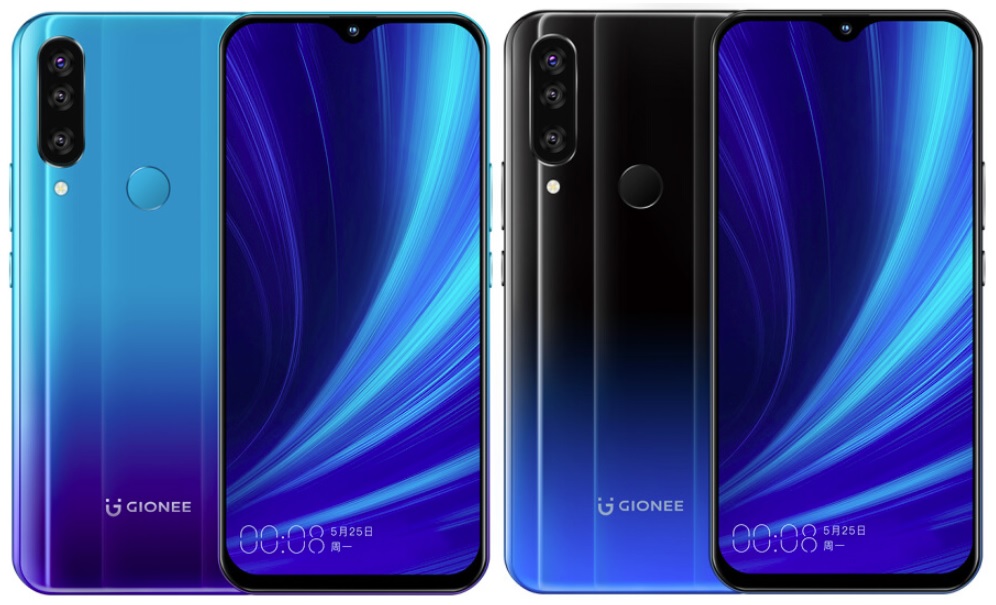There are a number of ways to interact with UI elements on an Android device. The most common ones are tapping, swiping and long pressing but some smartphones have more. Apple made this feature popular on iOS and called it Force Touch (or 3D Touch) but Deep Press is the official name of the feature on Android.
Apple received a lot of praise by adding this feature to its mobile operating system. It was an interesting move as many had become bored of the basic tap, swipe, long press options that we’ve used for over a decade. Some felt it was nothing more than a gimmick that utilized the company’s new Taptic Engine.
Still, it was new and it gave iOS users a reason to upgrade from their aging iPhone.
Apple hasn’t used the feature for much and its main function was brought over to Android using the long press action. We call this feature App Shortcuts on Android and they do most of what Apple used Force Touch/3D Touch for when it comes to iOS. Still, many OEMs felt as if it was a feature they needed in their phones.
Origins on Android
So a handful of smartphone manufacturers have devices on the market that have brought this feature to Android. Samsung is the most popular in the bunch but never really advertised it much, or did anything with it. For a few years, Samsung’s flagship smartphones had a Hard Press Home Button feature.
The company knew the industry was moving to a full-screen market (they even started it with curved edges) and let some applications take up the whole screen. This was nothing more than Immersive Mode but it prevented the software navigation buttons from being displayed on the screen.
So Samsung felt this was a great way to reach feature parity with the iPhone while improving the overall user experience.
Samsung seemed to have believed that some people would get confused when they didn’t see a home button displayed on the screen. To combat that, they advertised a similar feature to Force Touch and 3D Touch but one that would only work on the bottom part of the screen where the Home button normally is.
Samsung wanted its users to know that they could hard press on the spot where the Home button normally is and it would still function as one. Even if there isn’t a Home button displayed there, they wanted their users to know that pressing hard on that location would trigger that action.
Other OEMs implemented the feature more like iOS did but it never really spread past the OEM’s baked in features.
Android Q Changes this with Deep Press
The reason why the feature never really made it past baked in OEM features is that it wasn’t ever supported natively by Android. If an application, say Facebook, wanted to use the hardware for something they would have to contact an OEM that had a smartphone with the feature.
They would then need to work with the company to get the application to leverage the hardware that makes a Force Touch, 3D Touch, Hard Press, Deep Press (or whatever you want to call it) work. This would limit the feature to only work on those devices and they would need to be added for each device they wanted to support.
This is why the addition of the Deep Press feature in Android Q is going to be a big deal.
The hard press gesture will now be natively supported by Android with the update to version 10. Not only does this open up OEMs to creating new uses for the feature but it also lets application developers do the same. The thing is, just because Android supports it via the software doesn’t mean all devices can use it.
OEMs will still need to create hardware that supports the hard press / deep press mechanic. This is done within the display layer and, similar to the double tap to wake feature, it will need to be supported via hardware. So devices will have to have the hardware in place for their users to have the hard press feature.

Will OEMs Adopt Deep Press?
This is actually the interesting part as Android has supported plenty of hardware features that aren’t in very many smartphones. Android Q will even remove some software features that leverage the hardware that is present in over a billion smartphones. So the future of Deep Press is uncertain.
As of writing this, there are rumors that suggest Apple will be killing off this feature in their smartphones. Whether a lack of use or cost in parts is to blame here is anyone’s guess. But it’s interesting to see Google waiting so long to implement the feature into the core Android OS.
If Apple kills off Force Touch / 3D Touch from iPhone then the feature loses momentum.
If the feature itself begins losing momentum them OEMs will feel that it isn’t worth the extra money to implement the hardware. If OEMs don’t start using this hardware in the majority of their Android smartphones then it prevents app developers from feeling the need to support the feature.
Think about it from their end. Why add a Deep Press feature to your app if only 10 or even 20 percent of your Android users have a smartphone with the hardware to use it. Not only does this create fragmentation within your own app’s user base, but it also wastes resources that could be used for other features.
Possible via Software Algorithms
Now, I did want to point out that this can be done without specific display hardware involved. We’ve seen apps use the internal barometer to detect pressure changes (which happens when you press hard on the screen). This method is much less accurate but that might not matter.
In the end, Google will want the user experience of this feature to be similar to anyone that has access to it. So if it relies on any type of hardware at all then Google will make sure the OEM has a way to enable it for the user.








All I wanted to know was what is a Deep Press. Pity you didn’t explain it.